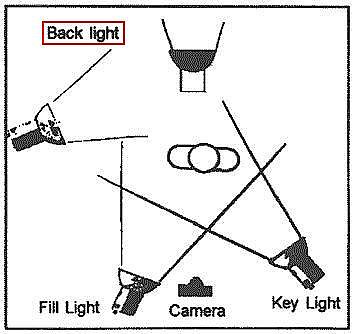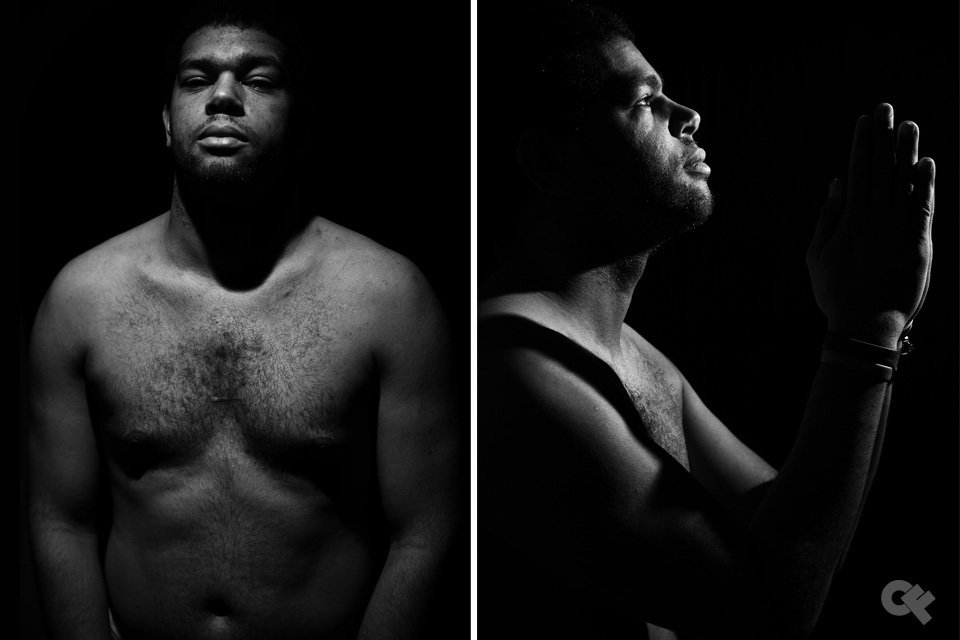Continuity editing in relation to film is the process of disguising the discontinuity of the editing process by making the narrative of the media production appear that it is continuous even though each individual shot of the editing is separate to create an essence of coherence within the film. There are many different elements of continuity editing to portray continuous action in film. Continuity is essential as it allows the storyline of the media production to appear realistic and also allows the audience to follow the action easily and thus understand what is happening throughout the film.
Establishing Shot
An establishing shot is an effective way of presenting the setting where the next scene will take place. An establishing shot is commonly in the formation of a crane shot which gives the audience a thorough view of the set including location, props and characters. A low angle shot is also common when using an establishing shot to present locations such as large houses or buildings. This is key in continuity editing as it allows the audience to understand where the characters are and gives indication to why they are there. The audience are not confused by a straight transition from one location with action taking place straight to another with action taking place between different characters. An establishing shot is most likely the symbol of a change in scene to help the narrative flow smoothly throughout the media text.
Shot Reverse Shot
When two characters are engaging in conversation, it would be easy to have one medium shot from the side of the two characters facing each other. However, this is not very effective and has little impact on the audience and techniques such as the shot reverse shot are useful as it allows the audience to follow the action and embrace conversations between characters to a greater extent. Also, it maintains a level of reality in the media text where the conversation becomes believable as the audience almost feel like they themselves are engaging in the conversation with the camera directly on the subject.
180 Degree RuleThe 180 degree rule plays an imperative part of continuity editing where it makes the action clear and concise, also giving the media text a professional look and not causing the audience to become confused by the layout of the setting on screen. 180 degree rule is that with the camera on one side of the action, it cannot then switch 180 degrees opposite the previous shot because it looks like the characters or the subjects in the picture have changed position which would not be possible in reality and thus breaks the naturalistic style of the media text. This relates to shot reverse shot where the 180 degree line passing through both subjects cannot be broken and the camera must stay on the same side that the 180 degree line marks in order to sustain the continuity of the media text.
30 Degree rule
The 30 degree rule in film relates to the relationship between the audience experience of the film and a 30 degrees angle from the centre of two subjects. This aids continuity editing based on the fact that it does not cause audience distortion and confusion based on the fact that it eliminates jump cuts in the editing and keeps the audiences' attention on the storyline of the media text and not the editing of the film as the jump cuts appear very stern and evident in the media text. However, alike the 180 degree rule, this rule can also be broken deliberately by editors to create certain effects such as portraying thoughts of a character or building suspense with distorted editing.
This short film made by students from Valley Park College helped me better my knowledge of the 180 and 30 degree rules in film.
Cross Cutting
Cross cutting is a useful editing technique used in film and helps sustain continuity as it creates the idea that two sequences of action in the media text are taking place at one time which is most likely not the case but the audience believes this based on the usage of cross cutting in the film to portray simultaneous events. Cross cutting normally consists of a straight cut and the action is normally in a completely different location to the previous shot and these two factors joined together can create the illusion that the two sequences are taking place at the same time.
Match on Action
Match on Action is an extremely common and essential concept of continuity editing. It is the created image from editing that the action on screen is continuous and not broken, even though the match on action filming process is broken down into two or more shots, the final product when all the shots are brought together make the audience believe that the action is happening continuously and instantaneously one after the other. A prime example of Match on action is the shot of a subject leaving a room from one side of the door and the camera then switches to outside the door where the subject looks like he/she has just come through even though two shots were taken from inside and outside the room but put together makes it appear nothing more than a person just walking through a door to the audience and allows them to focus on the storyline and not the editing.
Below is examples of Match on Action in media text:
Eye Line Match
An Eye line Match in film is the use of editing to create an illusion for the audience that one subject is looking at another subject even though in reality they may not be actually looking at anything but just looking off screen. Subject number one would off screen to the left or right and then the next shot would be the other subject in a different place in the same setting and then there is a further shot of the face of the first subject to clarify what they were looking off screen at and display their reaction and when all of the three sequences are brought together it appears as if one subject is merely looking at another subject without the audience noticing the break in the editing.
Below is short video which identifies the basic ideas of an eye line match:
Re-establishing shot
A Re-establishing Shot is very similar to the establishing shot with the only differences being the relation between the camera and the spatial/visual elements on screen and the fact that the re-establishing shot occurs at the end of the scene. The re - establishing shot occurs after closer shots of the scene are taken and the re-establishing shot offers a smooth transition into the next scene.
These are all of the different factors that make up continuity editing in the film industry and this will further help us structure our opening to a thriller for our coursework as we will be able to follow these guidelines.
Speed of editing
Speed of Editing is another essential factor in film as it is the key determining the mood of the film and what effect is placed onto the audience. The speed of editing is different in relation to the genres of particular films. In a fast paced action thriller, the time between each different shot is likely to be much shorter than a romance film as a Thriller is designed to be suspenseful and keep the audience tense and on edge and fast editing is key to this as it provokes audience attention keeping them thoroughly engage as they have to focus and keep up with the action. This also helps keep reality because it is likely that in a thriller film the action as the audience know from real life will be fast and aggressive and fast editing gives the effect of fast and abrupt action and the idea that there is a lack of control on screen.
However, in a romantic film, the mood that the director is most likely looking for is a relaxed, calm and love-filled one and therefore, slow editing is required to sustain this atmosphere. The slow editing while two lovers are talking on screen is realistic as there is no need for tension and suspense, and one picture with no edit allows the audience to relax and take in the action without having to focus to follow everything that happens on screen like they have to do when editing is of a fast tempo. This further gives the audience permission to relax and experience the feelings the characters on screen are most likely feeling which allows them to relate to the film to a greater extent.
Overall, the speed of editing is the time each shot lasts and this establishes the pace of the film moving the action along and further determines the mood of the film and how the audience feel watching the film.
Here are examples from films where the speed of editing is prominent in relation to their genre and the action on screen:
This extract from The Bourne Ultimatum is extremely effective when focusing on the speed of editing. At the beginning of the sequence, the speed of the editing averages at about 3 - 4 seconds per shot which is relatively slow compared to the rest of the extract, this allows tension and suspense to build while the women is cautiously moving around the building. This is juxtaposed to the quick and abrupt editing of Matt Diamond who is running across the buildings where the audience register is towards the women presented to them at the beginning of the sequence with each shot averaging at about 1/2 to 1.5 seconds. When the shot is taken back to the woman on screen, the editing slows down again which further builds suspense especially through the interaction with the non diegetic sound which is indication that the chase is still on in a different frame even though the camera is currently on the woman. The editing continues to be extremely fast where Matt Diamond is running and when the two agents eventually begin to fight, the editing is the fastest which implies that this is the climax of the scene and the audience know this is effective in the audience as they feel the most tense and engaged in the action at this point in time. This shows how the speed of the editing is crucial to the experience the audience have when watching the film as it is the key to suspense and tension. There is also a cool down period at the end of the scene where the audience can release some tension as the editing slows down and the fight comes to a close. This means the audience can release some previous tension and continue to follow the storyline.
In this extract from Sleepless in Seattle, the editing is much slower in comparison to the extract from The Bourne Ultimatum which can be heavily based on the genre difference in the two films. This shows how the genre can determine the technical aspects behind different films as they are designed to have different effects on their audience. As Sleepless in Seattle is a romance, it is designed to make the audience experience feelings of love and compassion and therefore the editing is manipulated to reflect this. In the opening section of the extract the editing ranges from 3 seconds to 20 seconds per shot. The long editing does not cause the audience to feel tense or even alert unlike the previous extract as the director wants the audience to understand the calm and relaxed environment of the action and for themselves to relax.
Style of Editing
The Style of Editing refers to the transitions of the different shots in a media text. The style of editing relies strongly on what effect the editor/director wants from a selected piece of a film. There are many different factors involved in the style of editing based on the fact that each different style has a particular meaning in relation to the action on screen.
Straight cut
A straight cut is the most common, basic and invisible transition between two different shots. It consists of shot A abruptly and plainly changing to shot 2. This transition normally does not have a large effect on the audience and can be used to retain reality in the media text as it does not manipulate the audiences' suspension of disbelief.
Fade
A Fade is another transition in which the action on screen gradually fades into or out of one colour. This colour is normally black, however, any single colour is considered as a fade. Fades occupy two forms, one forms is a fade in where the picture starts with one single colour on screen and gradually fades into the action on screen. The other is a fade out where the action on screen fades out in to a screen with one single colour. Fade ins normally occur at the beginning of a media text whereas fade outs are more prominent at the end of a film. Fades place different effects on the audience. A fade out into a black screen may relate to gruesome and dark elements in the media text where a fade into a white screen may be a symbol of purity and tranquillity if for instance someone has died peacefully at the end of a film. Unusual colours such as green are used in relation to the media text, such as at the end of the film Hulk where there is a fade into a green screen at the end which relates to the colour of the main character. Fades can also represent the passing of time within film.
Below is an example of how a fade shot works:
Dissolve
A dissolve is similar to a fade with some different features that separate the two. A dissolve is where one picture fades out while another one fades in which differs from a fade as one picture does not just fade into one colour. There is normally a connection between the two different pictures that are together in the dissolve to make it relevant to the storyline of the media text. An example of a dissolve would be a man reading a letter with an address on it which dissolves into a shot of the same man walking towards the location he saw on the letter. This shows how similar to a fade, a dissolve can be a regulator of time either pushing the storyline forward or engaging in a flashback.
Wipes
A wipe is the replacement of one picture on screen with another. It is almost as if one image is replacing another one on screen in a sweeping manner. A wipe shot is most commonly one image pushing another one off the screen to the left which is the indication that time is moving forward. Wipe shots are effective as it allows the sequence to change abruptly and keeps the audience attentive and engaged in the film.
Below is an effective example of a Wipe shot:
Jump Cut
A Jump Cut is an unusually stylistic editing technique and is most commonly a continuity error opposed to a transition used for effect. A jump cut is associated with discontinuity and it can appear as if there is a mistake in the media text which was unnoticeable on set. A Jump cut is where the two shots are changed very abruptly and it appears as if a piece of the media text has been removed. An example of a Jump cut used for effect can be found in the film Breathless 2, 1960 where Seberg is in the car and the camera is behind him where you can see the streets around and then the picture changes abruptly and the surrounding streets are different and he is holding a mirror in his hand which the audience know would be impossible in real life which can show how the Jump cut can break reality. However, in this particular instance, the Jump cut is used to emphasise the mirror in Seberg's hand and pushes the journey in the car forward showing how Jump cuts can also relate to time.
Graphic Match
A Graphic Match is another common editing technique which aids continuity based on the fact that it consists of two subjects on screen that have a similar look and one frame transforms into the other one with these two subjects in similar positions and as they have a similar look it allows the transition between the shots to happen smoothly and efficiently where the audience can take to the change in the picture in an understanding way. Therefore, when two different frames are matched in the way they look, it is described as a graphic match.
Below is an example of an excellent graphic match;
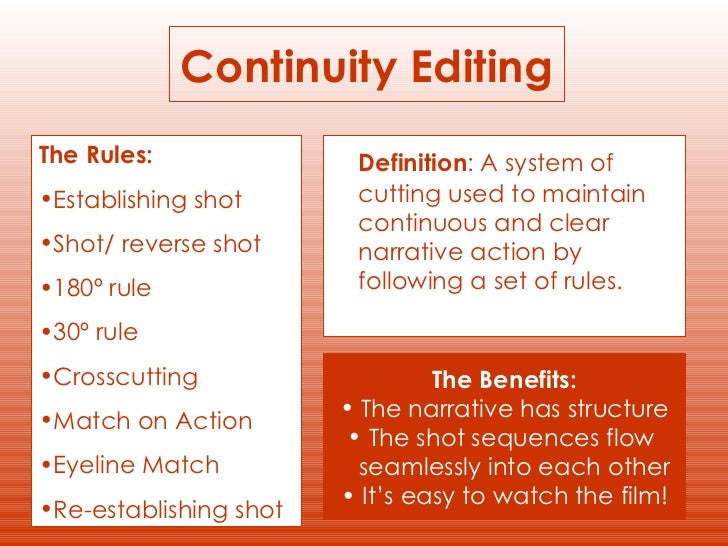




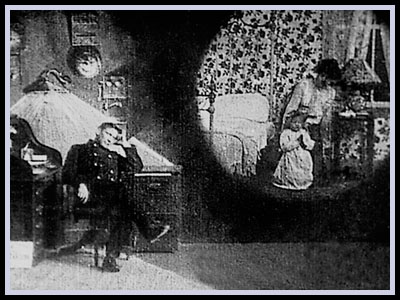
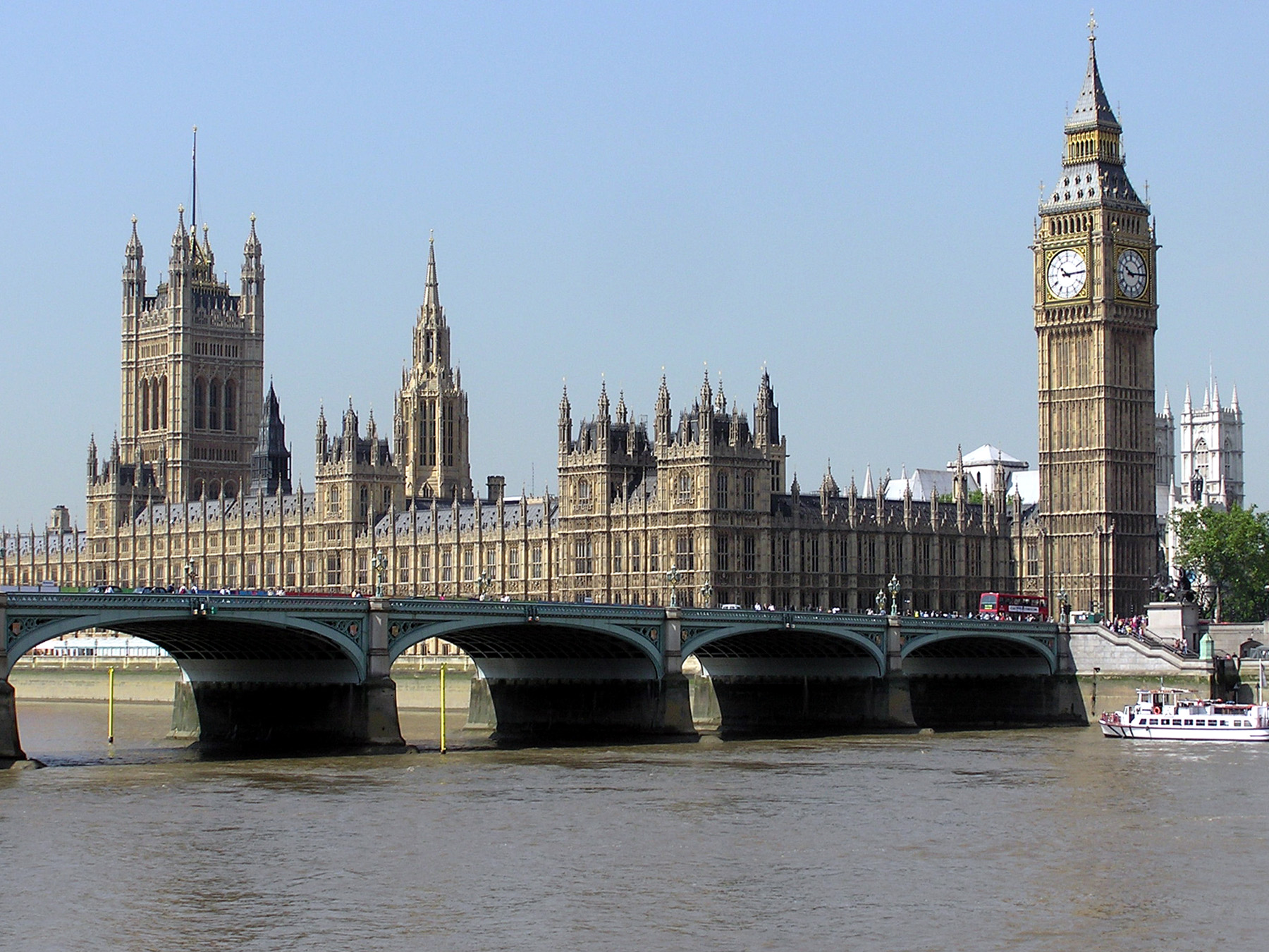






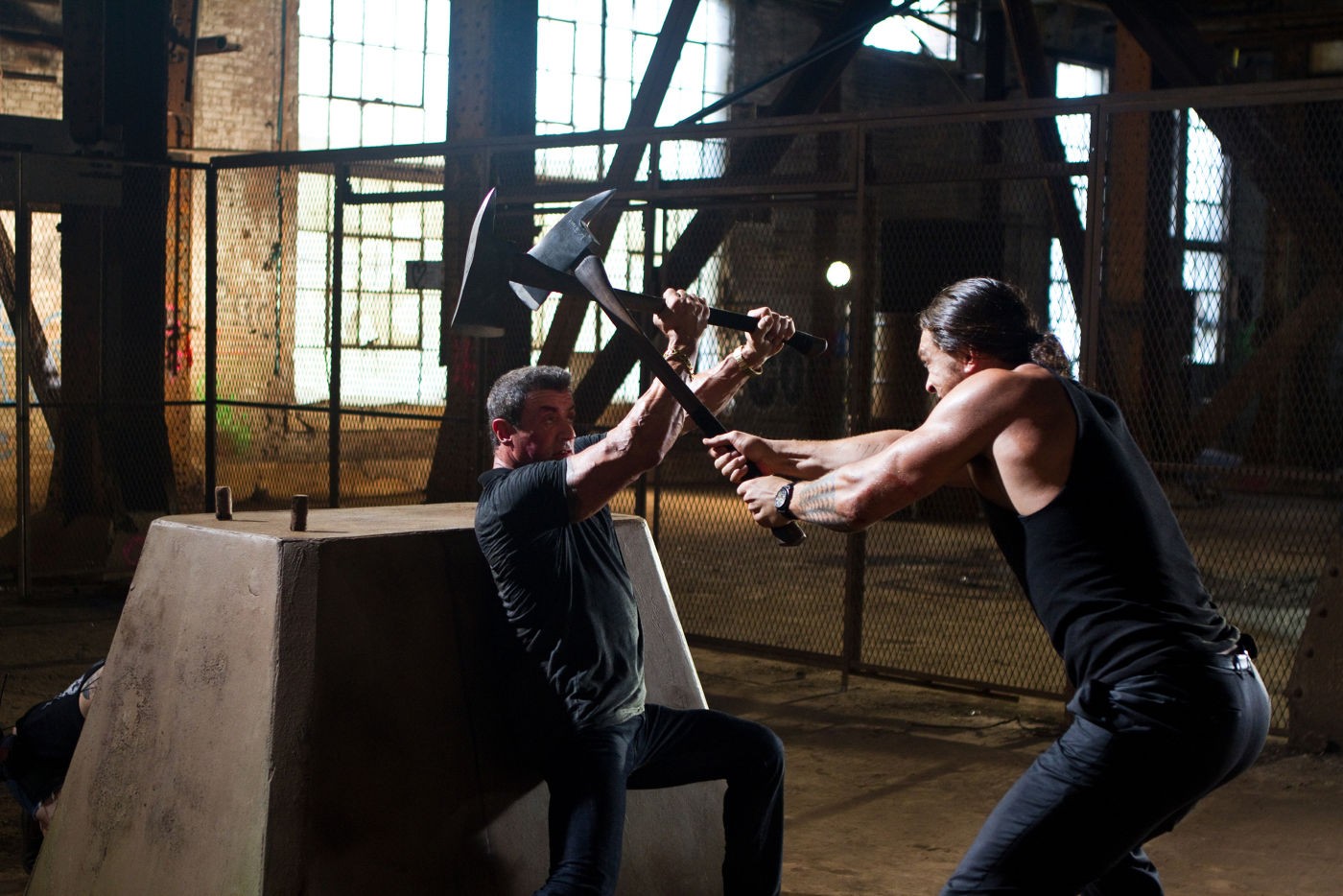

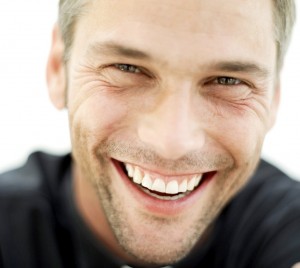



.jpg)


